Bison Tallow Vs. Beef Tallow on Skin
We include products in articles we think are useful for our readers. If you buy products or services through links on our website, we may earn a small commission.
Tallow vs. Lard: Battle of Two Superfats
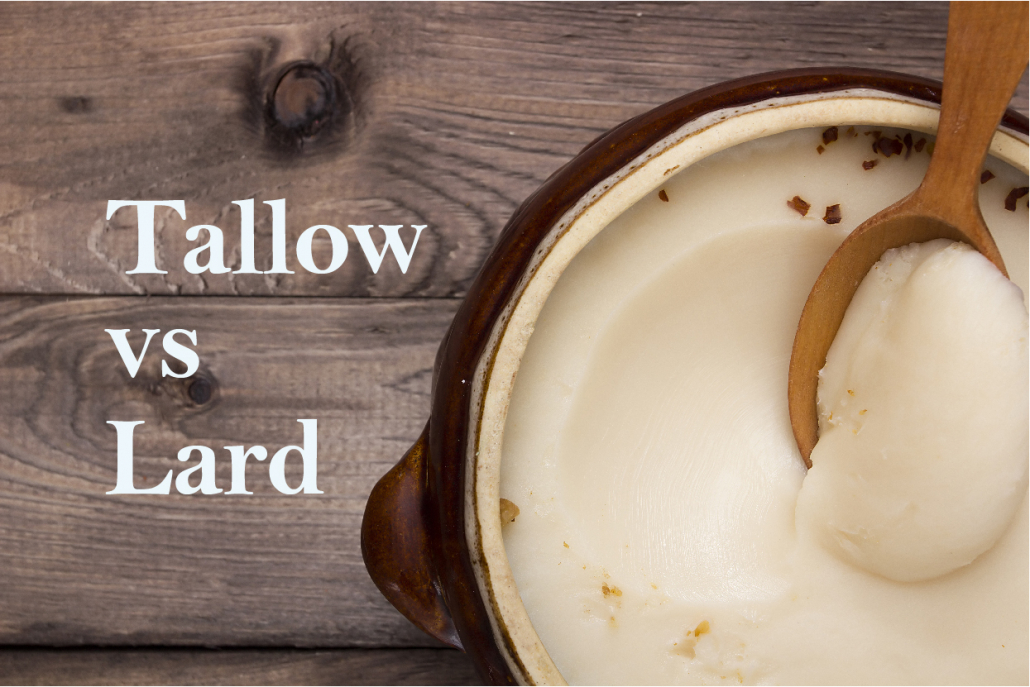
Table of Contents
- What is lard?
- Lard from free-range pigs vs conventional pigs
- Cooking with lard
- What is tallow?
- Tallow from grass-fed cows vs. conventional cows
- Cooking with tallow
- How to make beef tallow?
- How to make lard?
- Tallow vs. lard: which is better?
- The bottom line on tallow vs. lard
Tallow vs. lard:
It may not be the first thing you picture when thinking about a battle of the ages, but maybe it should be.
Tallow and lard are both impressively healthy fats with endless uses. You might even call them superfats . If the idea of fat as a superfood raises your eyebrows, you're probably still living in the 90's low-fat misinformation campaign–no worries, you can get up to speed here.
Both tallow and lard are types of rendered fat, meaning heat has been used to separate the pure fat from any solids — and both have been around for a very, very long time.
What sets tallow and lard apart, then? The difference is a matter of sourcing. Tallow is rendered beef fat, while lard is rendered pork fat.
Keep reading to learn more about the similarities, differences, and health benefits of tallow and lard.
What is lard?
Tallow is pig fat that has been rendered down into a more stable form. Most lard comes from 'leaf fat' or back fat. It's commonly sourced from a pig's belly or the area around its internal organs.
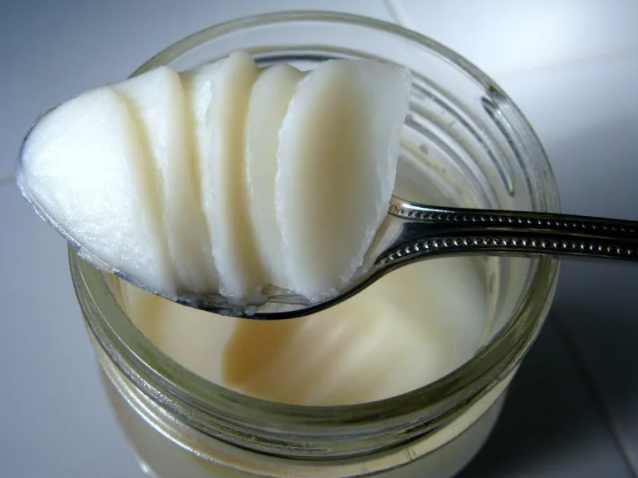
Lard is easy to spoon out and use. Image from HuffPost.
Source
Lard almost always comes from pigs, though some people also consider duck fat a type of lard.
At room temperature lard is saturated enough to be solid, yet unsaturated enough to be malleable. The best type of lard is leaf lard — this type is considered top shelf since it's creamier and softer than other varieties. Leaf lard also has a more neutral taste. In case you're wondering, it's called leaf lard because made exclusively from fat around a pig's kidney in the shape of a leaf.
Taste
Lard has a subtle taste that lends itself well to just about anything. You can use lard as a worthy replacement for Crisco (after all, Crisco tried to replace lard back in the 40s). Besides being tastier, lard is also much healthier!
Pork back fat generally has a more 'porky' taste than pork kidney/leaf fat, but it's still very mild. Chefs use lard in everything from baked goods to pastries and cookies.
Nutrition
Lard is surprisingly nutritious. That's because the pigs that make lard also make plentiful amounts of vitamin D — that is when they're able to get enough sunlight.
Pastured lard is one of the best vitamin D sources on the planet, nearly as high in this crucial vitamin/hormone as cod liver oil. Lard from pasture-raised pigs may also be higher in other fat-soluble vitamins.
Unfortunately, lard from commercial pigs is not nearly as healthy. Pigs raised in CAFOs (confined animal feeding operations) rarely see the light of day. These animals are stressed, deprived of their natural food sources, and drastically lower in vitamin D.
There's one more reason selecting lard from pasture-raised pigs is of utmost importance. Unlike cows, pigs can't metabolize unhealthy fats into healthy ones. Pigs are what they eat, and so are you!
For this reason, it's important to source your lard from pigs fed their natural diet if you want to avoid eating inflammatory fats. (Feedlot cattle, on the other hand, can convert the polyunsaturated fats they eat into healthier saturated fats .)
| Macronutrient | Per tablespoon | Per 100 grams |
| Calories | 115 calories | 902 calories |
| Carbohydrates | 0 grams | 0 grams |
| Total Fat | 13 grams | 100 grams |
| Saturated | 5 grams | 39 grams |
| Monounsaturated | 5.7 grams | 45.1 grams |
| Polyunsaturated | 1.4 grams | 11.2 grams |
| Omega 3 | 0.125 grams | 1 gram |
| Omega 6 | 1.25 grams | 10.5 grams |
| Protein | 0 grams | 0 grams |
Lard's top uses
- Cooking
- Baking
- Frying (low heat)
- Greasing pans
- Seasoning cast-iron
- Making soaps and candles
Another benefit to using lard: high-quality lard is surprisingly easy to find. Now that it's back in the spotlight where it belongs, you can easily pick up lard at butcher shops and grocery stores. If you haven't already, stock up on it and ditch those toxic vegetable oils.
Lard from free-range pigs vs conventional pigs
Free-range, grass-fed animals usually have better nutrition than factory-farmed ones, and free-range lard is no exception. It's far higher in vitamin D and also higher in other fat-soluble vitamins.
Cooking with lard
Rendered lard is not the same thing as bacon fat. It might provide the same delicious crispiness that you recognize from bacon fat, but lard is surprisingly free of bacony flavors. You can incorporate it into all sorts of recipes without fear of any unwanted flavors. Cook your low-carb veggies in lard for a delicious keto-friendly crisp.
What is tallow?
Tallow is beef fat that has been rendered down into a more stable form. Most tallow is made from a cow's kidney fat or suet .
Like lard, tallow is solid-yet-malleable at room temperature. Tallow's " saturated " molecular properties make it stable, and ideal for high-temp cooking.
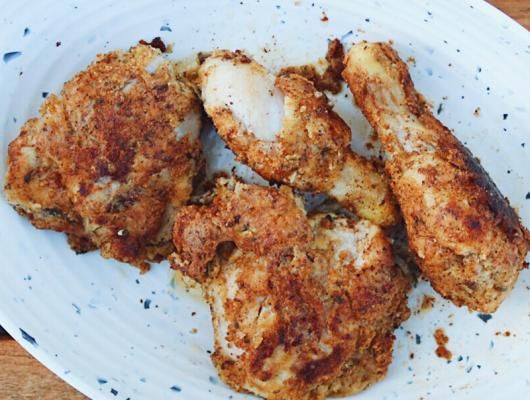
Tallow-fried chicken: tasty. Image from Pinterest.
Source
Tallow can come from any type of ruminant (multi-stomach) animal, including cows, sheep, goats, bison, and buffalo. The healthiest and most stable tallow comes from the suet fat found around an animal's kidney.
Taste
Tallow has a moderately 'beefy' flavor — even when rendered properly.
That said, you can use the taste of tallow to your advantage. Pair it with animal dishes, potatoes, or non-starchy vegetables. Tallow is so tasty that McDonald's used it as the secret ingredient in their french fries until animal rights activists led the company to switch over to vegetable oil.
Nutrition
Tallow's nutritional benefits are vast. It contains everything you've come to know and love about meat, only in a more energy-dense format. Grass-fed tallow, in particular, is high in vitamin E, CLA (conjugated linoleic acid), omega-3 fatty acids, and stearic acid. These nutrients are good for your body, mind, and mitochondria (the energy factories in your cells).
| Macronutrient | Per tablespoon | Per 100 grams |
| Calories | 115 calories | 902 calories |
| Carbohydrates | 0 grams | 0 grams |
| Total fat | 12.8 grams | 100 grams |
| Saturated | 6.4 grams | 49.8 grams |
| Monounsaturated | 5.4 grams | 41.8 grams |
| Polyunsaturated | 0.5 grams | 4 grams |
| Omega 3 | 0.08 grams | 0.6 grams |
| Omega 6 | 0.4 grams | 3.1 grams |
| Protein | 0 grams | 0 grams |
Tallow's top uses
- Cooking
- Frying (especially high-temp)
- Natural skincare products
- Natural balms/moisturizers
- Greasing cast-iron cookware
- Protecting/conditioning leather items
Tallow has been popular throughout culinary history. It's also been used to make soap, moisturizers, and candles. Tallow can even be used for skin care. It's rich, highly saturated fats essentially seal in the skin's moisture content. Studies show that tallow's palmitic and stearic acids have skincare-specific benefits.
But tallow really shines when it comes to high-temp cooking — its smoke point is at least 400 degrees. Whether you're frying eggs, steak, or chicken, tallow is more than up for the task.
Tallow from grass-fed cows vs. conventional cows
Tallow sourced from 100% grass-fed cattle has better nutrition than grain-fed alternatives. It's rich in:
- CLA (conjugated linoleic acid), an anti-inflammatory fat
- Fat-soluble vitamins (A, D, E, K)
- Trace minerals
Cooking with tallow
Tallow is fun and easy to use in the kitchen. Its texture is similar to coconut oil. While solid at room temp, it melts right down when placed between your fingers or on a hot pan.
Cleanup is minimal when you're done using tallow. You can store tallow in the pantry for months or more without risking contamination. Just keep it sealed.
Try cooking with tallow and you'll quickly discover why it was the most popular cooking oil for centuries before the arrival of the recently debunked anti-fat scare of the last 60 years.
Tallow harkens back to a time when people used the whole animal. Thanks to a combination of environmental awareness, and a re-discovery of the benefits of animal fat and organ meats , the practice of eating nose-to-tail is coming full circle today.
How to make beef tallow?
Making beef tallow is simple and easy. All you need to do is render a type of beef fat called suet.
- Empty a bag of suet into a large cooking pot
- Heat on low-medium heat until all fat has melted
- Cover and simmer on low heat for at least half an hour
- Remove any small chunks of meat from your melted suet with a slotted spoon. These chunks are called cracklings — and yes, you can eat them. They're tasty!
- Wait up to half an hour for the fat to cool
- While it's still liquid, transfer your tallow to small containers
- Leave one container out for quick use, and transfer the rest into your fridge or freezer.
How to make lard?
The process for making lard is virtually identical to the process for making beef tallow. Here are the steps:
- Empty a bag of leaf fat into a large cooking pot
- Heat on low-medium heat until all leaf fat has melted
- Cover and simmer on low heat for at least half an hour
- Remove any small chunks of meat from your melted fat with a slotted spoon. These chunks are called cracklings — and yes, you can eat them. They're tasty!
- Wait up to half an hour for the fat to cool
- While it's still liquid, transfer your lard to small containers
- Leave one container out for quick use, and transfer the rest into your fridge or freezer.
* Note that leaf fat will likely yield more lard than back fat.
Tallow vs. lard: which is better?
When it comes to choosing a winner in the tallow vs. lard tussle, some context is needed. What matters most to you? Taste? Health benefits? Versatility?
Here's how tallow and lard compare in terms of taste, nutrition, and overall health.
Tallow vs Lard: Taste
Lard's subtle flavor complements all things savory and sweet. Lard is neutral enough that it can be incorporated into a variety of dishes without setting off any bacon alarms. If you must eat pie or other baked goods, you can make them yourself with a lard-infused crust!
Tallow, on the other hand, does taste a little 'beefy.' It's best used for frying alongside flavors that are compatible with beef. French fries, fried meats, and fried organ meats all go great in tallow.
Lard wins this category since its taste is more subtle and its uses more versatile.
Tallow vs. Lard: Nutrition
Both tallow and lard are healthy, especially if you can get them from pastured (pigs) grass-fed and finished (cows) sources. Pastured lard is rich in vitamin D (something more than half all Americans are lacking), while tallow is rich in a slew of pro-metabolic fatty acids and vitamins.
This category goes to tallow, but only slightly.
Tallow vs. Lard: Overall health
Overall health is about more than just what you put into your body. It can also include what you put onto your skin.
And when it comes to skincare, tallow is a clear winner. Its fatty acid profile closely matches the profile of our own skin's sebum oil. Place a tallow balm on your skin and it gently relieves inflammation while locking in moisture. As an added benefit, many people find topical tallow soothing and warming.
Try tallow-infused skincare for yourself and you'll see why it's so renowned when it comes to warding off aging.
Considering how amazing beef tallow is for the skin, it wins the "overall health" category with ease.
| Tallow | Lard | |
| Source | Cows/ruminant animals | Pigs/monogastric animals |
| Storage temp | Refrigerated | Refrigerated |
| Shelf life | 1-3 months | 1-3 months |
| Nutrition highlights | CLA, stearic acid, vitamin E | Vitamin D |
| Best uses | Frying, cooking, skincare | Baking, cooking |
The bottom line on tallow vs. lard
Tallow vs lard? They're both awesome. Especially if they're from free-range, grass-fed sources (for cows), and natural fed (pigs). In today's world of overpriced 'superfoods' and overrated supplements, both tallow and lard offer tasty whole-food nutrition on the cheap.
If we had to make a choice between tallow and lard, we'd choose tallow. Or perhaps we'd choose to cook with lard, and use tallow on our skin?
Thankfully, such a choice is purely hypothetical. There's nothing stopping you from making both of these superfats staples in your diet!
Article Sources
mccaffreytheartumety1964.blogspot.com
Source: https://www.doctorkiltz.com/tallow-lard/

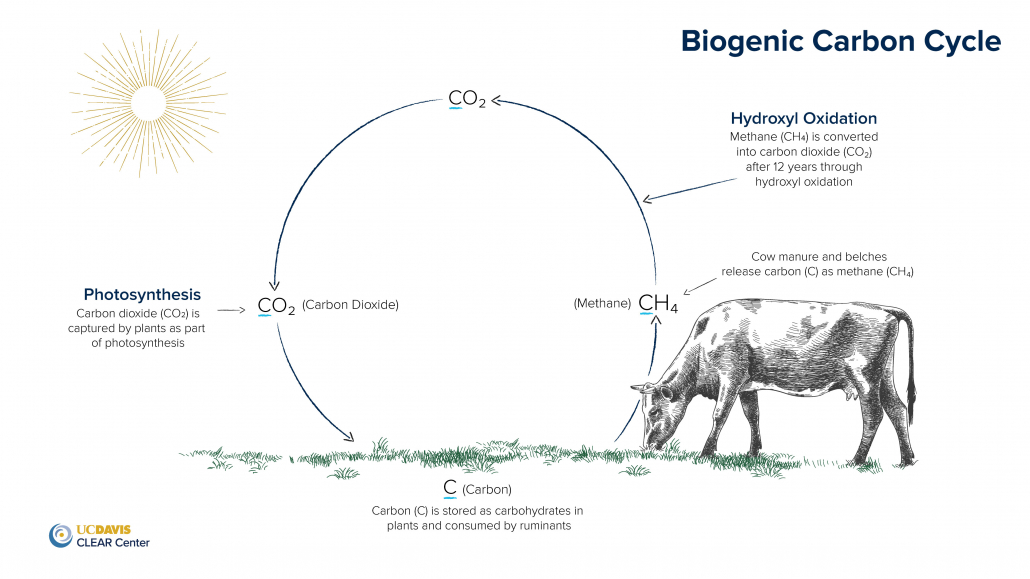
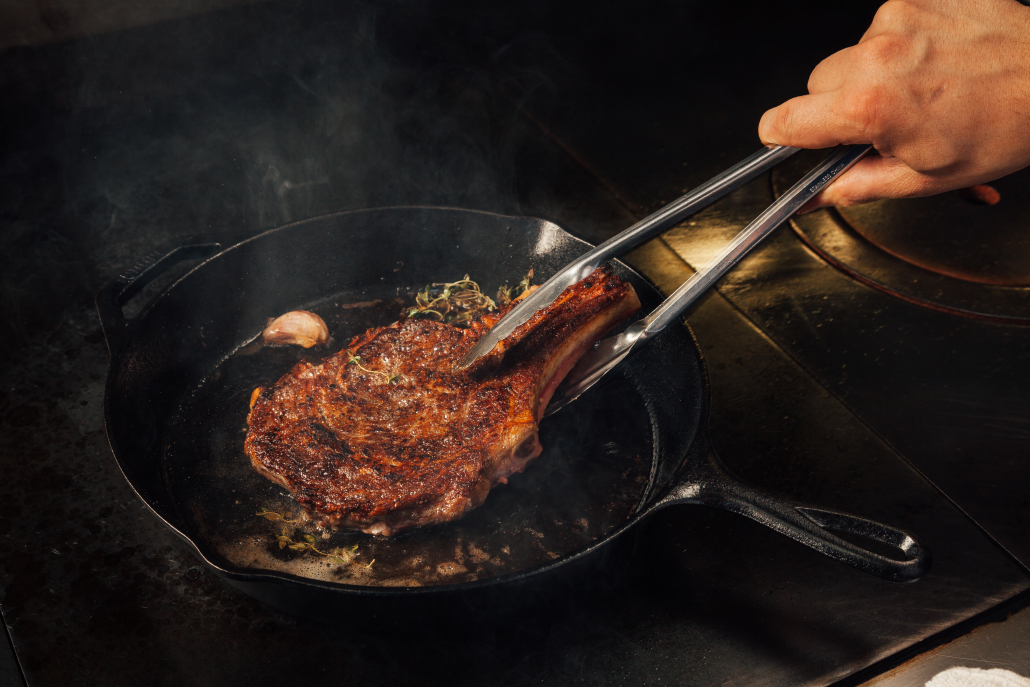
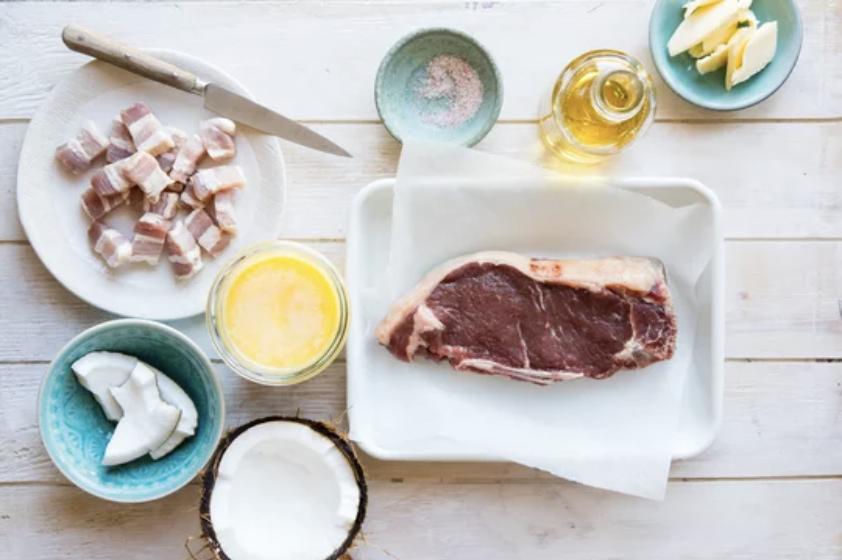
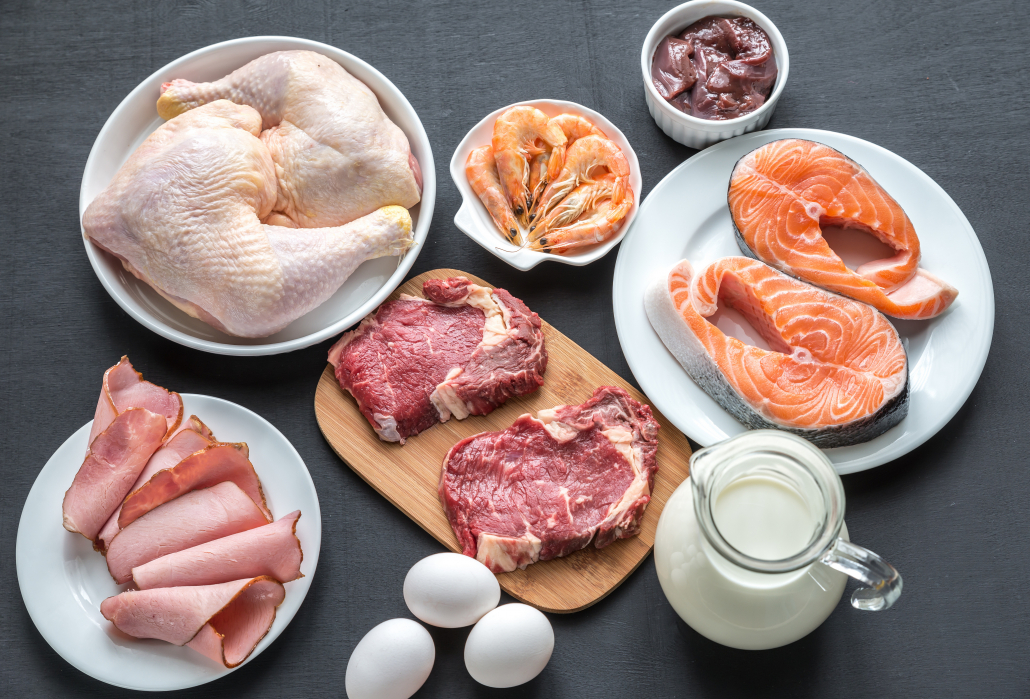
0 Response to "Bison Tallow Vs. Beef Tallow on Skin"
Post a Comment